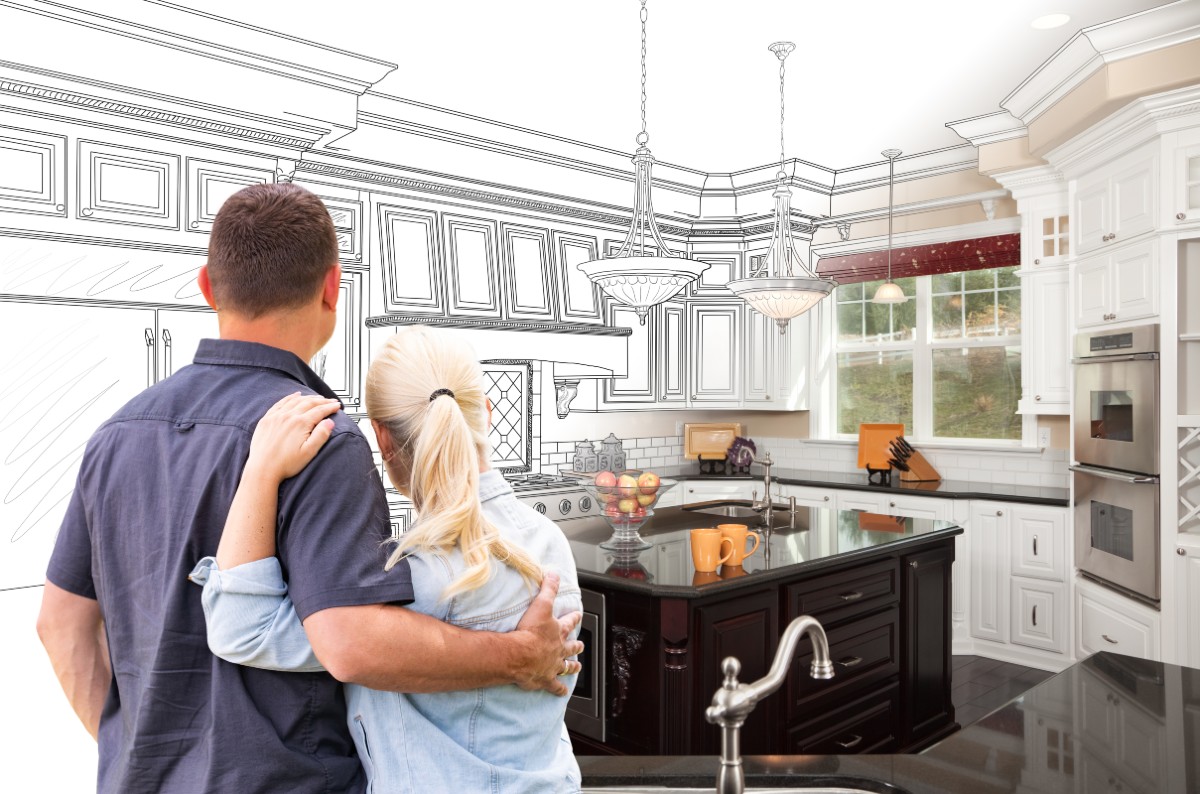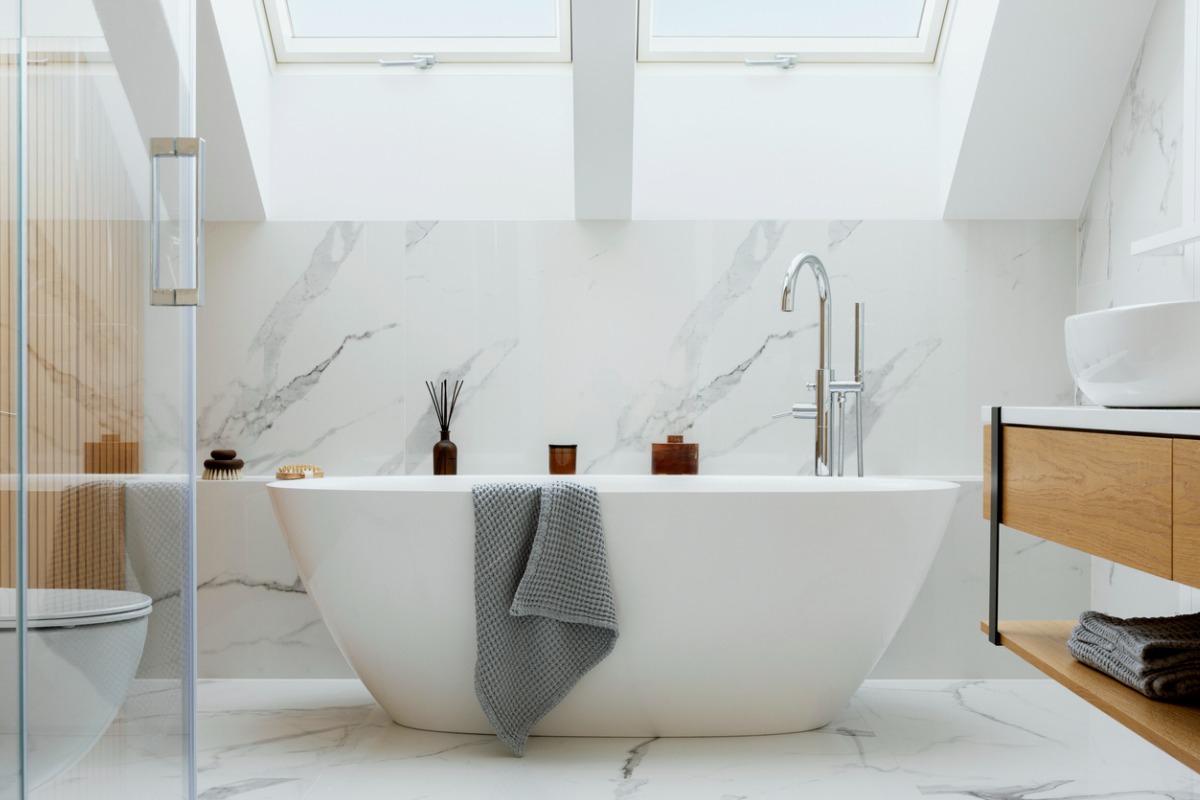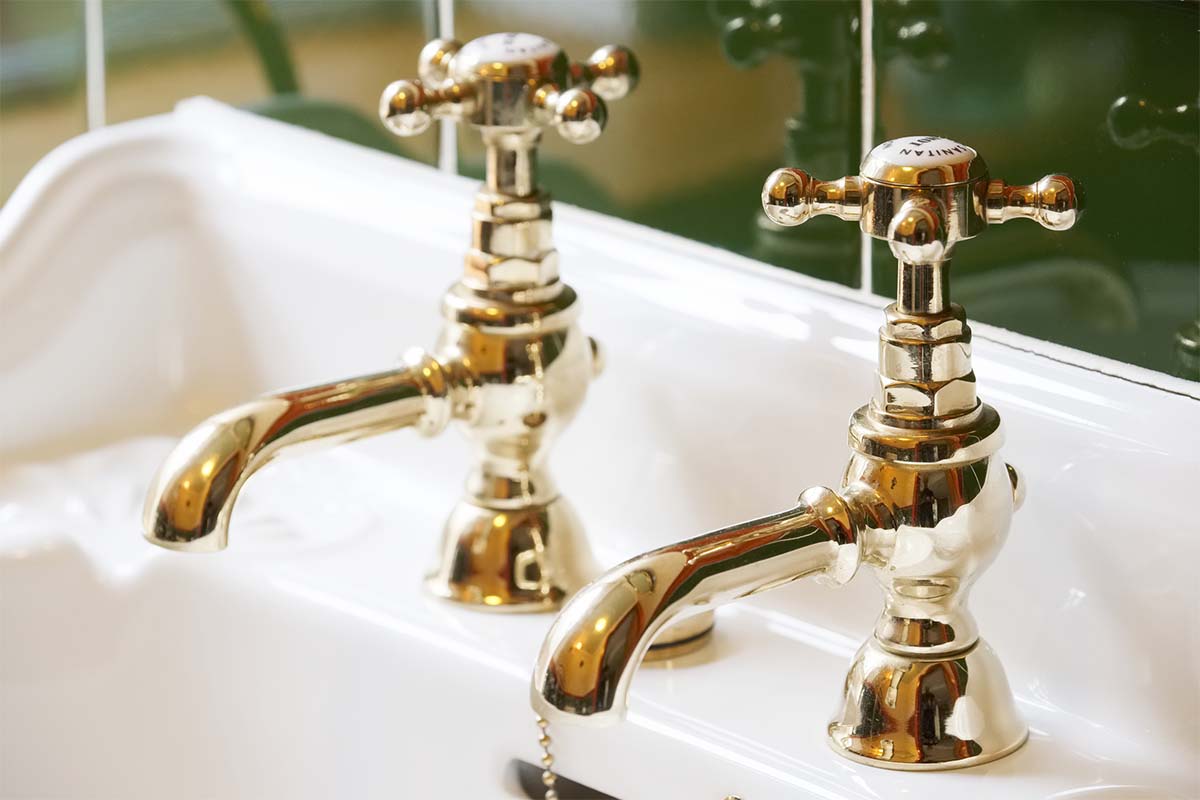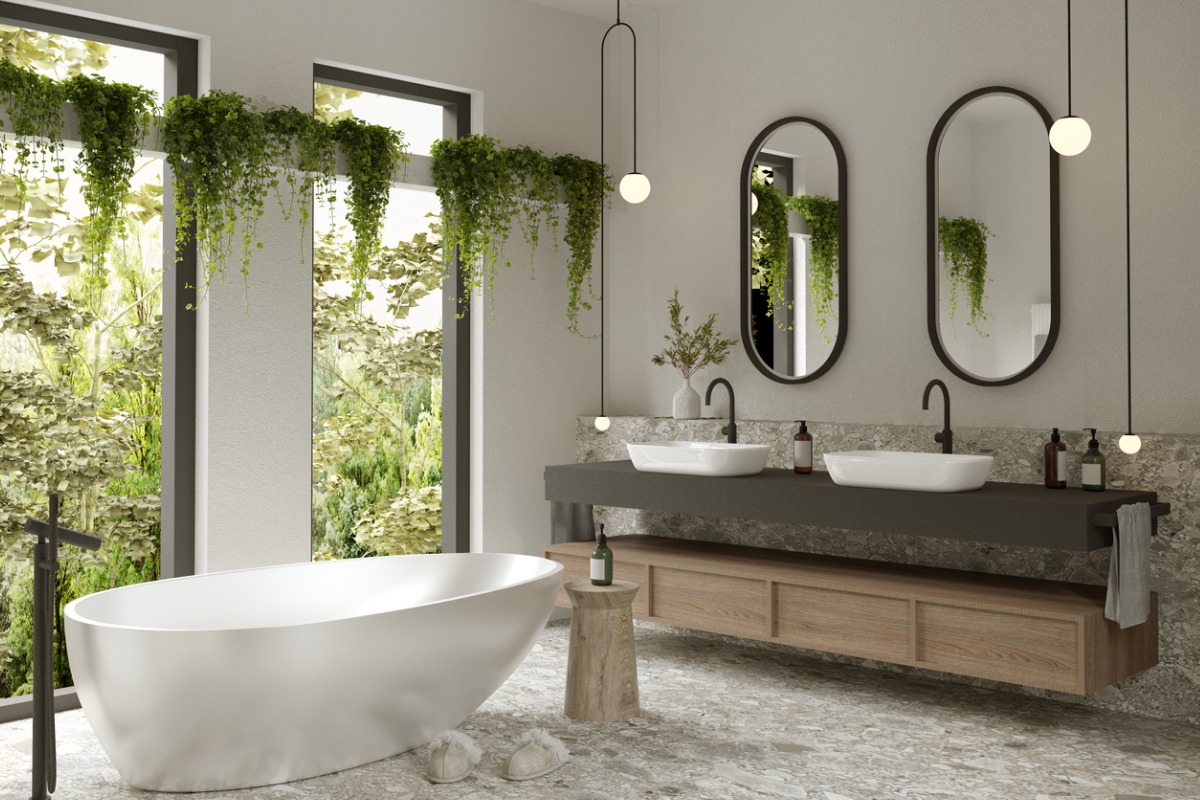Adding an ensuite bathroom to your home is one of the most desirable upgrades you can make. It enhances comfort, boosts functionality and gives you a private bathroom attached to your master bedroom or primary bedroom. But when...
The beating heart of your home...
The kitchen is often referred to as the heart of the home, as it is the entire space where meals are prepared, families gather to eat and share stories, and where entertaining often takes place.
As such, it is no wonder that the kitchen is one of the most important rooms in a house. However, as time passes, the kitchen can become outdated, inefficient, or simply not meet the needs of a growing family. That's where upgrading your kitchen comes in.

A kitchen upgrade can not only transform the look and feel of your home but can also increase its value and functionality. By upgrading your kitchen, you can create a space that is better suited to your lifestyle and preferences, while also enjoying the benefits of modern appliances, materials, and technology. Before embarking on a kitchen upgrade, however, it is essential to consider some key factors. These include your budget, your goals and priorities, your preferred style and design, and the timeline for the project.
By carefully considering these elements, you can ensure that your kitchen upgrade is a success, delivering the results you desire and improving your home for years to come.
Addressing your needs...

Goals and Priorities
Before starting a kitchen upgrade, it’s essential to assess your needs and determine your goals and priorities. Ask yourself what you want to achieve with your kitchen makeover. Are you aiming for more usable space, improved functionality, better efficiency, or simply a fresh new look? Clarifying these objectives from the outset will help guide your choices throughout the process.
Determine Your Budget
Once you've established your goals, it’s time to determine your budget. Consider how much you’re willing and able to invest in your kitchen upgrade. Setting a realistic budget allows you to prioritise key elements—whether that’s high-quality appliances, a statement kitchen island, or new cabinet doors—without overspending. Having a clear financial plan will also make it easier when selecting materials and fixtures.
Evaluate Your Current Kitchen Layout
Take time to evaluate your current kitchen layout and functionality. Identify what works and what doesn’t. Does your kitchen flow well, or are there bottlenecks? Would rearranging your kitchen cabinet placement make a difference? Look closely at storage needs, prep areas, and traffic patterns. Pinpointing problem areas now will allow you to design a more efficient, practical space.
Choose Your Preferred Kitchen Style and Design
Choosing your preferred kitchen style and design is key to creating a cohesive and appealing space. Look for inspiration in magazines, online platforms, and showrooms. Whether you're drawn to the sleek finish of a stainless steel kitchen or prefer the charm of classic wood finishes, the style you choose should reflect your personal taste while complementing your home's overall aesthetic.
Consider elements such as the colour scheme, cabinet doors, countertop materials, and flooring. A kitchen island might also be worth incorporating if you’re after additional workspace, storage, or a social gathering spot.
In Summary
By carefully addressing your needs—taking into account your goals, budget, current layout, and desired style—you can ensure that your kitchen makeover not only meets your functional requirements but also transforms the heart of your home into a space you love.
Planning the upgrade...

Once you have identified your goals, budget, and preferred style, the next step in upgrading your kitchen is to plan the project thoroughly. Careful planning is key to ensuring your kitchen remodel runs smoothly and meets your expectations.
Hiring a Professional Kitchen Designer
One of the first considerations is whether to hire a professional kitchen designer. A designer can assist in creating a functional and efficient layout tailored to your needs and preferences, whether you’re working with an existing space or planning a larger kitchen extension. They can also offer valuable insights on materials, appliances, and layouts, helping you make informed decisions that balance style, practicality, and budget. From choosing a solid wood worktop to deciding on the placement of your dining table, a designer ensures every element complements the overall design.
Understanding the Kitchen Renovation Process
It’s important to familiarise yourself with the typical stages of a kitchen renovation. The process generally includes demolition and removal of old fittings, installation of new appliances, cabinets, countertops, and flooring, as well as electrical and plumbing upgrades. Final steps often involve painting, tiling, and adding finishing touches. Understanding each phase helps you stay organised and prepared throughout your kitchen remodel.
Creating a Timeline for the Project
Developing a realistic timeline is crucial. Mapping out the entire kitchen installation process, from demolition to final detailing, keeps you on track and reduces unexpected delays. Factor in potential setbacks, such as material availability or permit approvals, to avoid unnecessary stress.
Obtaining Necessary Permits and Approvals
Depending on the scope of your kitchen ideas—whether it’s a simple refit or a full-scale kitchen extension—you may need to secure permits from local authorities. Always check regulations early in the process to ensure your kitchen remodel complies with building codes and avoids costly penalties or delays.
In Summary
By hiring a professional kitchen designer, understanding each stage of the renovation process, creating a clear timeline, and obtaining necessary permits, you can confidently approach your kitchen remodel. Careful planning lays the foundation for a successful kitchen upgrade—whether you're adding a new dining table area, opting for solid wood finishes, or implementing fresh kitchen ideas to revitalise the space.
Key Considerations When Upgrading Your Kitchen...

Appliances
When upgrading your kitchen, one of the most significant considerations is the appliances you choose. Thoughtful appliance selection contributes to both functionality and the overall aesthetic of your space.
1) Choose energy-efficient appliances
Energy efficiency should be a top priority. Opt for appliances with ENERGY STAR ratings, ensuring they meet high efficiency standards. Not only will energy-efficient models help reduce your utility bills, but they’ll also lessen your environmental impact—allowing you to create a sustainable kitchen without compromising performance.
2) Select the right size and style
Your appliance choices should align with your household’s needs. For large families or frequent entertainers, a spacious refrigerator and double oven may be essential. Additionally, the style of your appliances should complement your kitchen's design. Sleek finishes like stainless steel can bring a modern touch, while more traditional options can match classic aesthetics, especially if you’re pairing them with open shelving or a breakfast bar.
3) Consider smart technology
Many modern appliances feature smart technology, allowing remote control via smartphone apps or voice commands. These smart features are especially useful for improving efficiency and simplifying tasks, such as meal prep timers or adjusting temperatures on the go.
Cabinets
Cabinets play a key role in defining the look and functionality of your kitchen. Here are important factors to weigh:
1) Material and finish options
From solid wood to laminate and metal, cabinet materials offer a variety of looks and durability levels. Solid wood provides a timeless finish, while laminate or high-gloss options can lend a more contemporary edge. You’ll also want to decide on finishes—whether natural wood, painted, or glazed—to match your overall style.
2) Choosing the right style and layout
The style and layout of your cabinets directly affect both storage and visual appeal. Whether you prefer shaker-style cabinets or slab-front designs, selecting the right look will help complement your countertops and flooring. Additionally, consider practical layouts, including the number of shelves, pull-out drawers, and drawer fronts, to ensure ample storage for meal prep essentials and cooking utensils.
3) Custom vs. pre-built cabinets
You’ll need to decide whether to opt for custom-built or pre-made cabinets. Custom cabinetry offers maximum flexibility and allows you to tailor storage solutions to specific needs, such as integrating open shelving. Pre-built cabinets, on the other hand, can be more affordable and quicker to install, though they may offer fewer design options.
Countertops
Your choice of countertops plays a crucial role in both design and practicality.
1) Material options
Kitchen worktops come in a range of materials, each with unique benefits. A marble worktop, for example, adds timeless elegance but requires regular maintenance. Alternatives like quartz or laminate offer greater durability and lower upkeep. If you’re considering replacement worktops as part of your remodel, factor in longevity, style, and ease of cleaning.
2) Durability and maintenance requirements
It’s important to consider how your countertops will stand up to daily use. Durable surfaces like quartz and granite resist scratches and stains, while solid surface options offer seamless finishes. For busy kitchens, choosing low-maintenance materials that can handle constant meal prep without showing wear is key.
3) Choosing the right colour and texture
Countertop colour and texture influence your kitchen’s overall feel. Whether opting for a subtle, neutral tone or a bold marble pattern, ensure the worktop complements other elements like cabinets, drawer fronts, and flooring. Textured surfaces add depth but should remain easy to clean.
Lighting
Lighting is one of the most powerful tools in enhancing both function and style in your kitchen.
1) Assessing your current lighting
Start by reviewing your current setup. Are certain areas underlit or too bright? Identifying dark spots or areas where meal prep happens frequently will help determine where to add task lighting or ambient fixtures.
2) Choosing the right type of lighting
A layered approach to lighting works best. Combine overhead lighting for general illumination, task lighting for specific work zones (like under-cabinet strips for countertops or breakfast bars), and accent lighting to highlight features like open shelving or patterned tiles.
3) Placement and functionality
Ensure lighting placement enhances both visibility and atmosphere. Incorporate dimmer switches or smart lighting systems for added flexibility, allowing you to adjust brightness based on time of day or activity.
Flooring
Flooring anchors the design of your kitchen while also needing to withstand daily wear and tear.
1) Material options
Popular kitchen flooring options include hardwood, tile, vinyl, and laminate. Tile and vinyl are particularly durable and moisture-resistant, making them ideal for busy kitchens. Patterned tiles, for example, can add visual interest while being easy to clean.
2) Durability and maintenance requirements
Durability is key in any high-traffic area. Consider how much upkeep you’re willing to do. Tile and vinyl require minimal effort, while hardwood may need more care to prevent water damage or scratches.
3) Choosing the right colour and texture
The colour combinations and texture of your flooring should balance with your kitchen’s other design elements. A neutral palette pairs well with bold cabinetry or countertops, while textured or patterned floors can serve as a standout feature—especially when combined with simpler cabinet and countertop finishes.
The Kitchen Upgrade Process...

The kitchen upgrade process typically involves several different stages. Here's what you can expect during each step:
Demolition and removal of old materials.
The first step in any kitchen upgrade is to remove the old materials, such as cabinets, countertops, flooring, and appliances. This can be a messy and time-consuming process, but it's necessary in order to create a clean slate for your new kitchen design.
Installation of new appliances, cabinets, countertops, and flooring.
Once the old materials have been removed, the next step is to install the new appliances, cabinets, countertops, and flooring. This involves careful measurement and planning to ensure that everything fits correctly and looks great.
Electrical and plumbing upgrades.
Upgrading your kitchen may also involve making changes to your electrical and plumbing systems. For example, you may need to install new outlets, lighting fixtures, or plumbing connections to accommodate your new appliances and fixtures.
Painting and finishing touches.
The final step in the kitchen upgrade process is to add the finishing touches, such as painting, trim work, and hardware installation. These details can have a big impact on the overall look and feel of your kitchen, so it's important to take your time and make sure everything is just right.
In summary...
Throughout the kitchen upgrade process, it's important to work with a professional contractor or designer who can help guide you through each step and ensure that everything is done to your satisfaction. With careful planning and attention to detail, you can create a beautiful and functional kitchen that you'll love for years to come.
Conclusion...

Upgrading your kitchen can have a number of benefits, from improving the functionality and flow of your space to increasing the value of your home. By taking the time to carefully consider your needs and preferences, you can create a kitchen that not only looks great but also works well for your daily routine.
When planning your kitchen upgrade, there are several key considerations to keep in mind, including your goals and priorities, budget, layout and functionality, style and design, appliances, cabinets, countertops, lighting, and flooring. By taking each of these factors into account and working with a professional designer or contractor, you can create a kitchen that meets all of your needs and exceeds your expectations.
So if you're ready to take the next step and upgrade your kitchen, now is the time to start planning. Whether you're looking to make a few small changes or completely overhaul your space, the key is to take your time, do your research, and work with experienced professionals who can help you achieve your vision. With the right planning and execution, your dream kitchen is within reach.
The Conversion Guy - An experienced, professional kitchen fitter serving Derbyshire & Staffordshire
Reach out and make your dream kitchen a reality today with The Conversion Guy! If you are looking for an experienced, reliable, professional kitchen fitter in Derbyshire or Staffordshire, be sure to contact us today!
We have over 40 years of experience and pride ourselves on delivering top-quality customer service. Our team is dedicated to providing excellent results while meeting all required safety and quality standards.
Give us a call now to discuss your project needs and find out more about our services. Alternatively, book a free Discovery Call with The Conversion Guy or schedule a FREE no-obligation quote. We look forward to hearing from you!
From the Learning Centre
Explore our resources and learn about pricing, bathroom refits, kitchen renovations, loft conversions and many other home improvements in our Learning Centre




